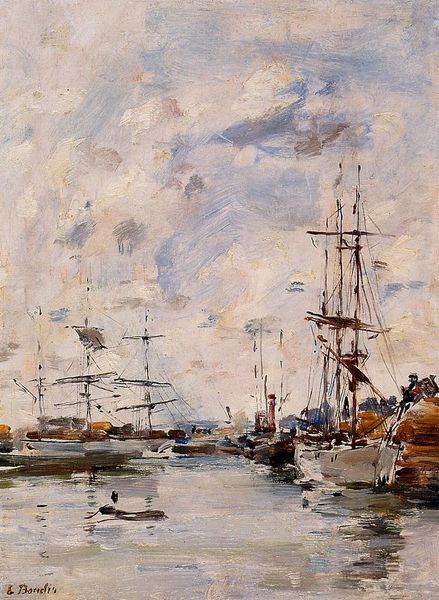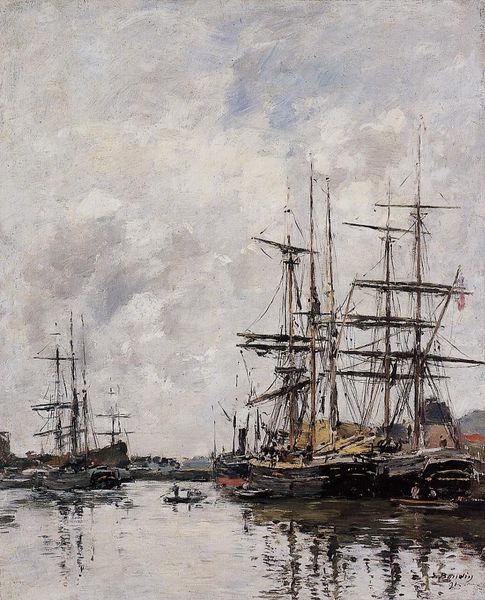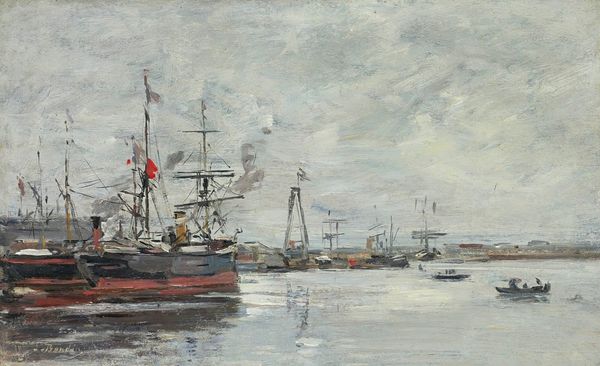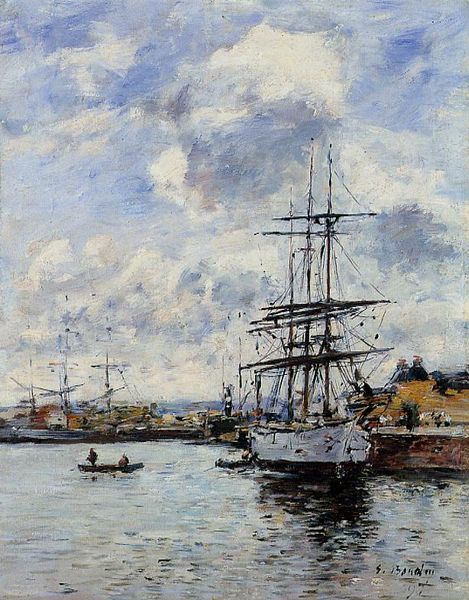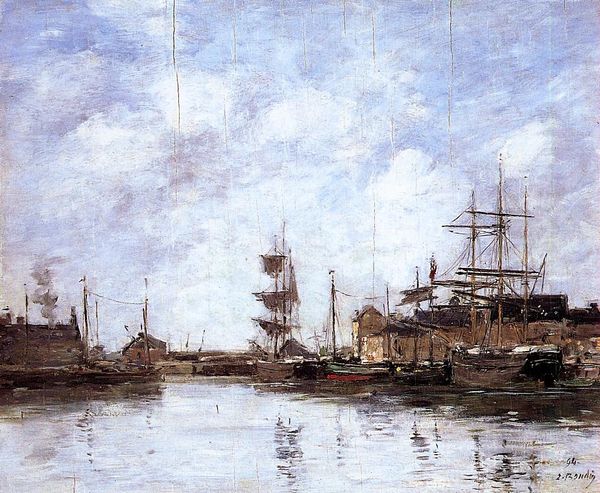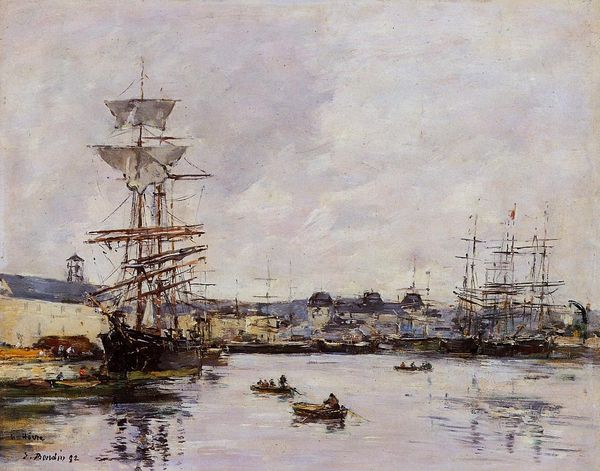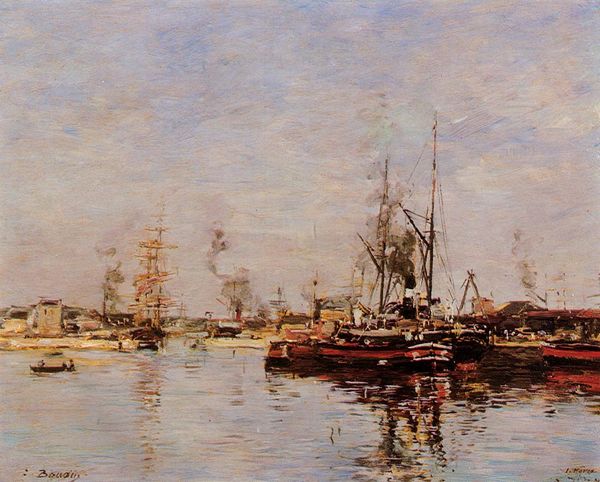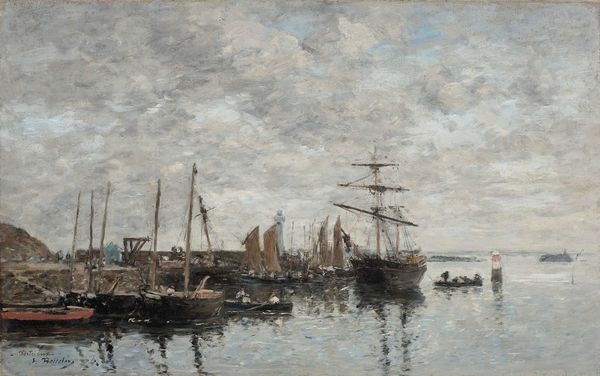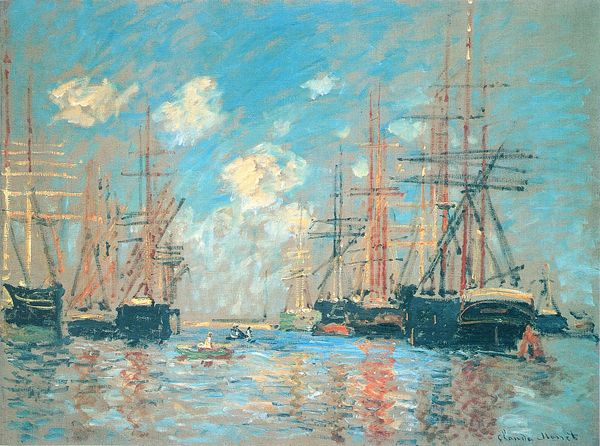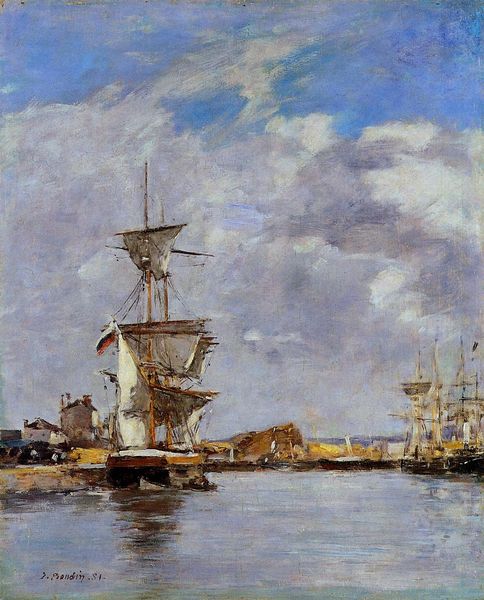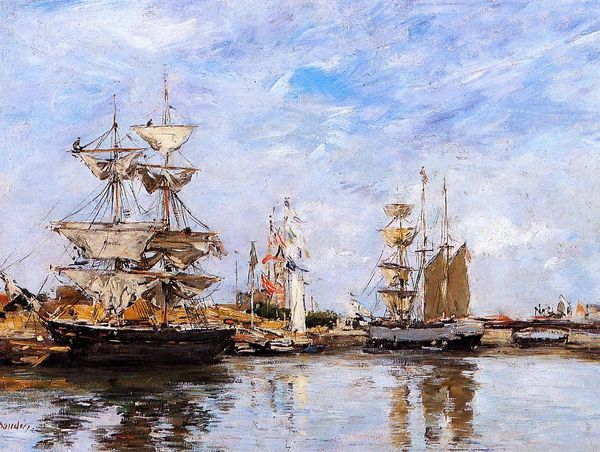
Copyright: Public Domain: Artvee
Editor: This is "Dunkerque, voiliers à quai" by Eugène Boudin, painted in 1891 using oil paints. It's incredibly evocative, almost like a hazy memory of a port. The clouds are so dominant. What do you see in this piece? Curator: The first thing that strikes me is how the masts of the ships reach skyward, almost mimicking the crosses we often see in religious iconography. Considering Dunkerque's history as a strategic port, these ships could be seen as symbols of both connection and conflict, of journeys undertaken and boundaries defended. The reflections on the water seem to mirror not only the scene but also a deeper, perhaps subconscious, narrative. Editor: That's fascinating, I hadn't thought about the symbolic weight of the masts in that way. Do you think Boudin was consciously imbuing them with that kind of meaning? Curator: It's hard to say with certainty, but Impressionist painters were often concerned with capturing fleeting moments and personal experiences, and these experiences often resonate with collective memory and archetypal images. So, while Boudin may have simply been trying to depict what he saw, the imagery he chose—ships, the sea, the reaching sky—is inherently loaded with historical and cultural significance. What emotional response do these visual cues trigger in you? Editor: I guess I feel a sense of quiet longing, almost a melancholy for journeys past. The impermanence of the clouds and reflections add to that feeling. Curator: Exactly! That resonance with collective memory and personal experience, played out in the symbolic language of the imagery, is what makes this more than just a pretty picture of boats. Editor: I’ll definitely look at Boudin’s other seascapes with a new appreciation for the possible cultural and historical context. Curator: As will I, with a keener awareness of my own psychological response.
Comments
No comments
Be the first to comment and join the conversation on the ultimate creative platform.


